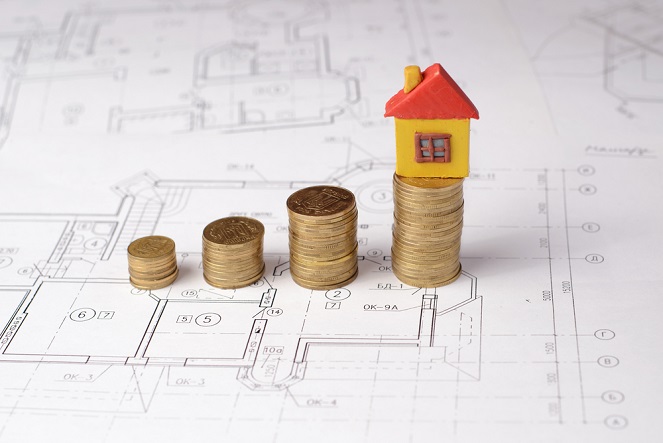
By Staff Writer
Enticed by double-digit returns, low mortgage rates, and soaring rents, many residential real estate investors are wondering whether buying a rental property makes more sense than buying and flipping a house. Here are the eight things investors should consider.
- The lack of inventory means that there has never been a better time to look at rental opportunities.
Thanks to the housing boom and bust, there’s not much inventory available—which can work to your benefit. “During the boom, builders really weren’t focused on multifamily buildings,” says Sharga. “We found ourselves with a shortage of rentals, and as a result, all types of rental units, from apartments to duplexes to single-family homes, are experiencing 96-97% occupancy. This drives up rents, which is good news for investors.”
The lack of supply also suggests that there’s plenty of room for different types of housing stock to be added to the rental market, Sharga says.
- Demand for rentals will only continue to grow, as people continue to choose renting over buying.
“We’re seeing far less activity from first-time homebuyers than we would expect right now,” Sharga says. “People who would normally be buying their first home are becoming renters instead. So, while household formations will increase, home ownership will continue to drop.”
Sharga cites four reasons for this trend. First, the Millennial generation has had a difficult time recovering from the Great Recession. “Their unemployment rates are higher than virtually any other age cohort,” Sharga points out. “Many work in jobs that don’t pay them take on the long-term financial commitment of a house.”
Second, many in this group find themselves saddled with high levels of student debt, limiting their ability to get a loan. “Credit is extremely tight right now. New lending rules have very strict debt-to-income ratios, and in a lot of cases, that locks people out of the market,” says Sharga.
Third, high rental prices make it difficult for young adults to save for a down payment, since so much of their income is going to housing.
Lastly, says Sharga, people are simply putting off buying their first home. “They’re taking longer to get married and have children—the kind of life events that typically prompt people to buy a house.”
- Look for rental opportunities in downtowns or urban mixed-use zones.
As part of this shift toward renting rather than buying, Millennials are moving into downtown areas in cities like New York, Philadelphia and Chicago.
“They want to be close to their work,” Sharga notes. “They don’t want to commute any further than they have to.”
This is an opportunity for investors to consider traditional rental units in a downtown, or mixed-use buildings that mix residential and offices or retail. Pittsburgh’s historic Standard Life Building, which recently went up for auction on Auction.com, is a good example of this trend. The building, which formerly housed offices, now contains ground-floor retail spaces and 41 renovated rental apartments that are 90% leased.
- Focus on rental opportunities in less-expensive markets, like the Southeast.
As institutional investors have bought up properties in markets like Phoenix and Southern California, prices have risen, making it harder for investors to purchase property and requiring them to charge higher rents in order to see a reasonable return. That in turn shrunk the pool of potential renters.
“Buy-and-hold investors have moved into less expensive markets, like Atlanta,” says Sharga. “Florida markets are still pretty affordable, too. We’re seeing movement into the Carolinas. In the Midwest, we’re seeing more activity in Illinois and Indiana.”
Sharga says that the investors he sees are looking for properties that cost less than $150,000, so they can charge a monthly rent of about $1,000 and turn a profit. In contrast, markets like San Francisco and New York see the lowest returns due to their high rents. Investors have changed their strategies as a result.
“In California, the investors that bid on properties on Auction.com are more than three times as likely to be flippers as they are to be buying to rent and hold,” says Sharga.
- Plan to make your return on the monthly rental income, not on the eventual sale of the property.
Markets like California and New York remain outliers, however. Investors in most markets, according to Sharga, have shifted their strategies from expecting to make money on a home’s sale to a model that’s based on rental income.
“For the past few years, the business model of many investors was to buy the property at less-than-market value, rent it for a few years while the market recovers, and then sell it at a high profit margin when home prices appreciated,” says Sharga. “But home prices have jumped ridiculously over the past few years. This isn’t sustainable. Home prices will continue to appreciate, but at a very moderate rate, so your model right now really needs to be making your return on monthly rental income.”
- Do your homework and know your market.
While there are rental opportunities in virtually every metro area, investors should tailor their strategies to meet the needs of their own area. That’s where doing your homework and understanding local market trends are important.
“Don’t just follow the money,” says Sharga. “You need to be aware of is how easy or difficult it might be to rent in a given area. The laws of some cities tend to be friendly to tenants and less to landlords.”
Sharga advises talking to homeowners associations or real estate attorneys to find out if there are rules about how many rental units are allowed in a given community or neighborhood, particularly if you’re looking at single-family homes. Condominium and townhome complexes are likely to have these sorts of regulations, which may affect your ability to finance rental properties. For example, Fannie Mae and Freddie Mac require that a certain number of condos in a building be owner-occupied before they will consider financing investment purchases.
- Understand your cost structure.
On a basic level, renting out a property may seem simple. You look at your monthly carrying costs, charge enough rent to cover them, and make a profit. But, Sharga says, people often fail to factor in other costs.
“You need to determine what your capital is going to cost you,” Sharga says. “Are you paying all in cash, or are you going to be borrowing money? If you’re borrowing money, you have to factor in interest on top of your capital costs in order to figure out what it’s going to cost you to break even on the purchase. Taxes will vary from market to market, which you need to take into account as well.”
Prospective landlords also need to consider how much it will cost to fix up the property to make it rentable, as well as annual maintenance costs and the cost of a property manager, if necessary.
- Keep some money in reserve, and expect the unexpected.
Investors should remember that they need cash reserves to cover unanticipated problems.
“Everyone has their own rules about how much money you need to put aside,” says Sharga, “but you need to allot some percentage of your rental income as a cushion for maintenance and repair, or to tide you over while you’re trying to replace a tenant.”
The Bottom Line: A Lucrative Rental Market
Sharga predicts an “unusually lucrative” rental market for the next three years.
“We’re finally going to see household formations increase,” Sharga says, “but I think we’ll continue to see home ownership rates drop for at least another year or two.”
Even with the current increase in construction of multifamily units, there won’t be enough construction to meet this growing demand for rentals. And this lack of inventory spells good news for potential landlords, as long as they’re prudent.
“Owning a rental is more complex than buying a property and flipping it,” says Sharga, “but it’s also something that can be a good long-term investment opportunity for people that are disciplined and organized enough to manage these properties over a period of time.”

